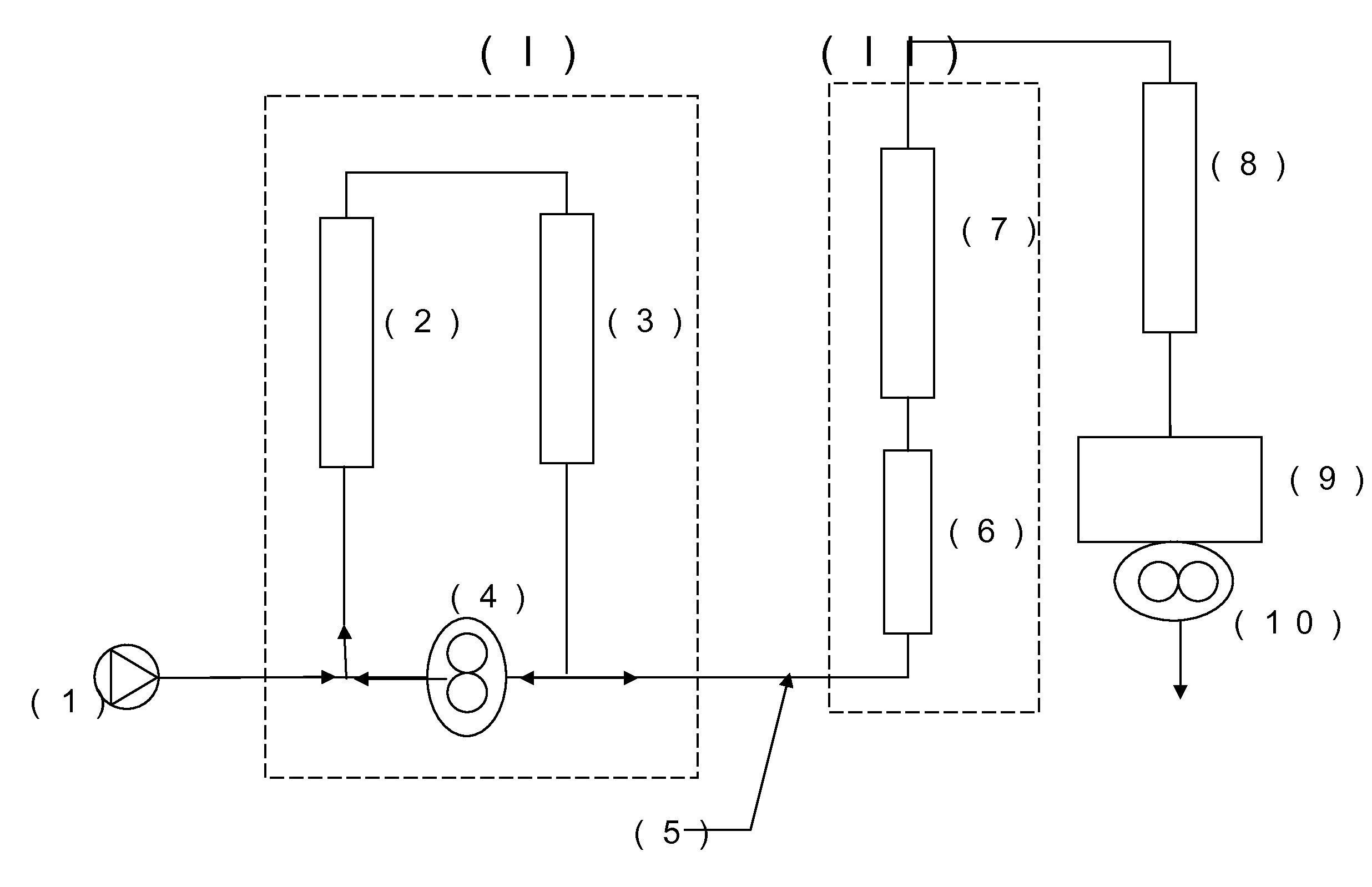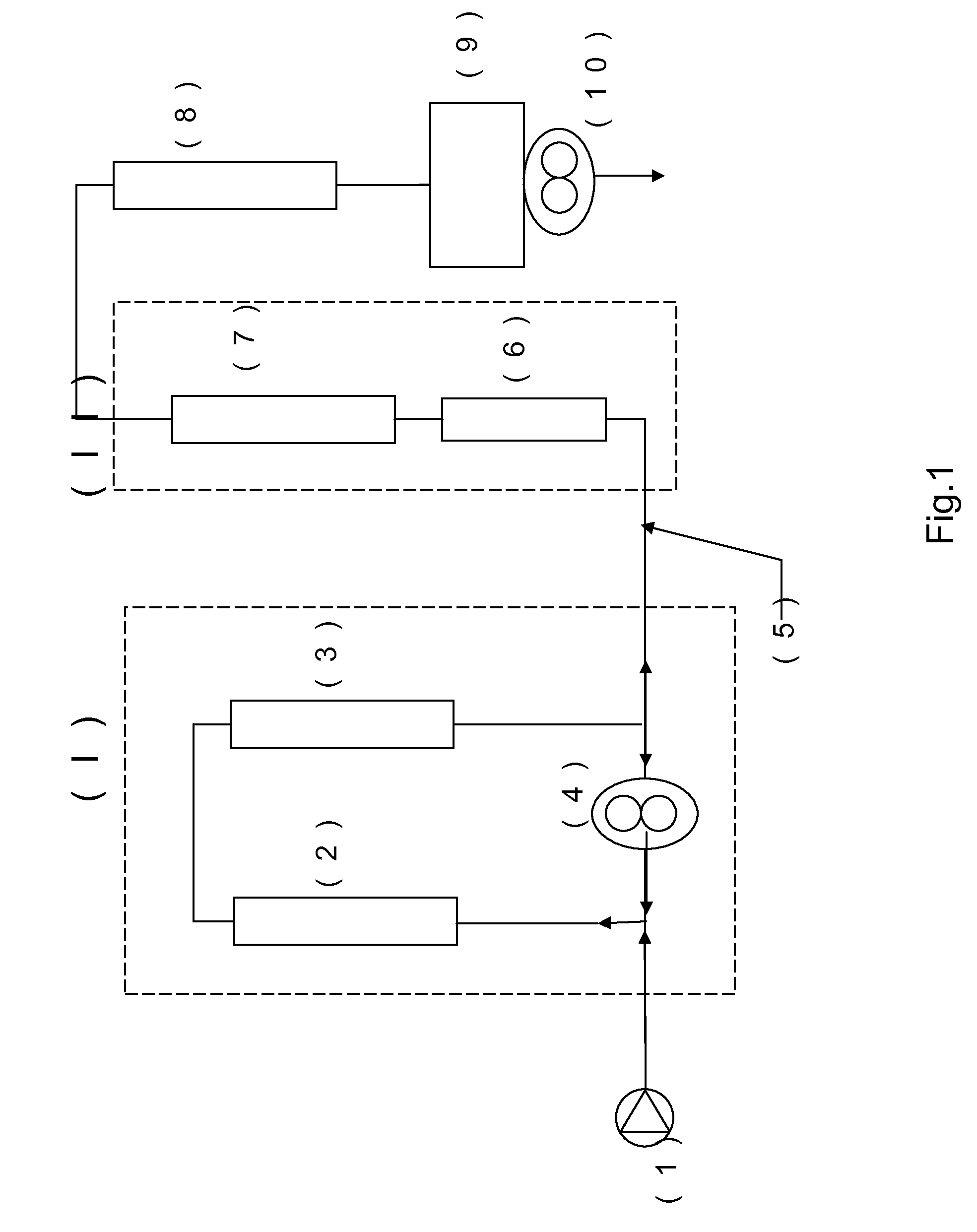Process for production of thermoplastic copolymer
a thermoplastic and copolymer technology, applied in the field of thermoplastic copolymer production, can solve the problems of inability to achieve homogeneous resin composition distribution, insufficient heat resistance improvement effect, inferior color and mechanical strength, etc., and achieve excellent balance between physical properties, reduce the amount of remaining phenyl maleimide, and improve the color of resin
- Summary
- Abstract
- Description
- Claims
- Application Information
AI Technical Summary
Benefits of technology
Problems solved by technology
Method used
Image
Examples
example 1
[0103]The continuous polymerization apparatus shown in FIG. 1 was used to supply a monomer mixture according to the following formula continuously from the plunger pump (1) at a rate of 5.75 kg / h (5.0 kg / h of monomers and 0.75 kg / h of methyl ethyl ketone). The loop reactor is composed of tubular reactors with an internal diameter of 2.5 inches (a SMX-type static mixer with 30 static mixing elements built therein and with a heat transfer area 130 m2 / m3, from Gebruder Sulzer Ltd in Switzerland) (2), (3) and of a gear pump (4) for circulating a mixed solution. The reflux ratio (R=F1 / F2) was 20. Continuous polymerization was carried out with the polymerization temperature of the loop reactor (I): 110° C.; the inner wall temperature of the reactors (2), (3): 115° C.; and the average residence time: 1 hour. The degree of polymerization was 70 weight %.
[0104]The plug flow reactor (II) was composed of tubular reactors (6), (7) with an internal diameter of 2.5 inches, and the inner wall temp...
example 2
[0106]Continuous polymerization was carried out with the same formula as in Example 1, except that 1,1′-bis(t-butylperoxy)cyclohexane was not used. The degree of polymerization in the loop reactor (I) was 65 weight %, the inner wall temperature of the plug flow reactor (II) was 140° C., the polymerization temperature was 135° C., the degree of polymerization was 84 weight %, and the amount of the remaining N-phenyl maleimide was 2000 ppm. The volatilizing reaction was developed in the same way as in Example 1. The amount of the obtained polymer was 4.2 kg / h, and the polymer generation rate was 42% / h. This copolymer (A-2) had Mw of 115000 and Mw / Mn of 1.4.
example 3
[0107]Continuous polymerization was carried out with the same formula as in Example 1, except that 9 parts by weight of acrylonitrile, 55 parts by weight of styrene, and 36 parts by weight of N-phenyl maleimide were used. The degree of polymerization in the loop reactor (I) was 65 weight %, the degree of polymerization in the plug flow reactor (II) was 88 weight %, and the amount of the remaining N-phenyl maleimide was 1000 ppm. The amount of the obtained polymer was 4.4 kg / h, and the polymer generation rate was 44% / h. This copolymer (A-3) had Mw of 110000 and Mw / Mn of 1.5.
PUM
| Property | Measurement | Unit |
|---|---|---|
| temperature | aaaaa | aaaaa |
| temperature | aaaaa | aaaaa |
| pressure | aaaaa | aaaaa |
Abstract
Description
Claims
Application Information
 Login to View More
Login to View More - R&D
- Intellectual Property
- Life Sciences
- Materials
- Tech Scout
- Unparalleled Data Quality
- Higher Quality Content
- 60% Fewer Hallucinations
Browse by: Latest US Patents, China's latest patents, Technical Efficacy Thesaurus, Application Domain, Technology Topic, Popular Technical Reports.
© 2025 PatSnap. All rights reserved.Legal|Privacy policy|Modern Slavery Act Transparency Statement|Sitemap|About US| Contact US: help@patsnap.com


